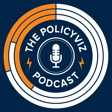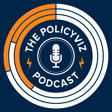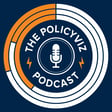
Mapping Inequality: Braden Crooks on Redlining and Urban Transformation
In this week’s episode of the PolicyViz Podcast, I speak with Braden Crooks, co-founder of Designing the We, about their project Undesign the Redline, an interactive exhibit that explores the history and lasting impact of redlining in the U.S. Braden shares how his background in landscape architecture and urban design led him to develop this project, which combines research, storytelling, and community engagement. He discusses the importance of making history tangible through physical exhibits, the role of public participation in shaping the narrative, and the upcoming digital expansion of the project. We also discuss how organizations can bring Undesign the Redline to their communities, using it as a tool for education, dialogue, and activism.
Keywords: data, data visualization, Redlining, Undesign the Redline, Urban policy, Structural inequality, Community engagement, Designing the We, Interactive exhibit, Storytelling in policy, Housing discrimination, Urban history, Social justice, Data visualization, Public participation, Community organizing, Historical inequities, Urban renewal, Environmental advocacy, Fair housing, Policy storytelling, Systemic racism
Subscribe to the PolicyViz Podcast wherever you get your podcasts.
Become a patron of the PolicyViz Podcast for as little as a buck a month
Check out Braden’s work and Designing the We on their website
Follow me on Instagram, LinkedIn, Substack, Twitter, Website, YouTube
Email: jon@policyviz.com


